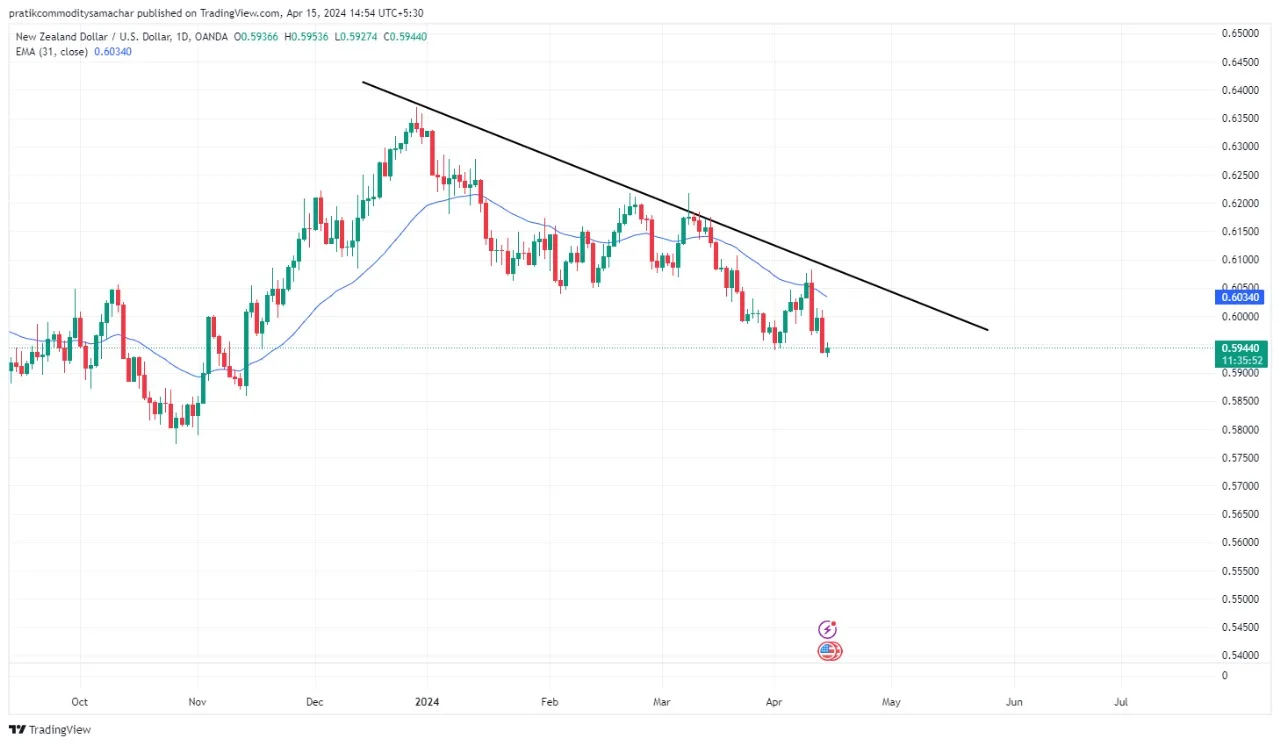
The exchange rate between the New Zealand Dollar (NZD) and the US Dollar (USD) plays a significant role in shaping various aspects of the New Zealand economy. Here’s a fundamental analysis of the impact and implications of the NZD/USD exchange rate on New Zealand’s economy:
Positive Impacts:
Export Competitiveness: A weaker NZD compared to the USD enhances the competitiveness of New Zealand’s exports in international markets, potentially leading to a boost in export revenues for the country’s exporters. This can positively impact the economy by contributing to increased trade activity and revenue generation.
Tourism: A lower exchange rate can make visits to New Zealand more affordable for tourists. This affordability can attract more visitors and benefit the tourism industry, thereby contributing to economic growth and development of the sector.
Inflation: A weaker NZD can lead to higher import prices, potentially contributing to increased domestic inflation. While excessive inflation can have negative effects, moderate inflation can support economic growth by stimulating spending and investment.
Negative Impacts:
Import Costs: A lower exchange rate can increase the cost of imported goods and raw materials, potentially leading to higher production costs for businesses. This can affect the overall cost structure of businesses and impact their competitiveness in the market.
Inflation: While a weaker NZD can boost inflation through higher import prices, it can also put pressure on consumer purchasing power if wages do not keep pace with rising prices. This can affect consumer spending and overall economic stability.
Investment: A volatile exchange rate can create uncertainty for investors, impacting foreign direct investment and capital flows into the country. This uncertainty can affect long-term investment decisions and overall economic growth.
Impact on Trade Balance:
The NZD/USD exchange rate significantly influences New Zealand’s trade balance by affecting the competitiveness of its exports and the cost of its imports. A lower exchange rate can make New Zealand exports more affordable for foreign buyers, potentially boosting export revenues and narrowing the trade balance deficit. However, it also increases the cost of imported goods and raw materials, potentially leading to wider trade balance deficits.
Influence on Export Prices:
The NZD/USD exchange rate affects the prices of New Zealand’s exports by influencing their competitiveness in international markets. A lower exchange rate makes New Zealand exports cheaper for foreign buyers, potentially boosting export revenues and narrowing the trade balance deficit.
Impact on Agricultural Exports and Tourism:
New Zealand’s agricultural exports, particularly dairy products, are significantly influenced by the NZD/USD exchange rate. Similarly, a lower exchange rate can make visits to New Zealand more affordable for tourists, potentially contributing to an improvement in the economy and appreciation of the currency.
Financial Factors:
The NZD/USD exchange rate is influenced by various financial factors, such as interest rate differentials between the Reserve Bank of New Zealand and the U.S. Federal Reserve, open market activities by the Fed, and carry trades. These financial dynamics can impact the exchange rate and consequently influence the economy.
The NZD/USD exchange rate plays a pivotal role in shaping the New Zealand economy. While a lower exchange rate can enhance export competitiveness and benefit the tourism industry, it can also lead to increased import costs and inflationary pressures. The exchange rate’s influence on trade balance, export prices, and financial factors underscores its significance in shaping the economic landscape of New Zealand.
Technical Outlook : NZD/USD

NZDUSD is trading at its lowest level in last 5 months. It has seen one bounce from the support levels but is still trading in its down trend. The dollar index is trading bullish with a market price of 105.60. The Fed has not yet announced any rate cut. The Fed may delay its decision to cut rates until September. There is still strength in the market. If we look at the daily chart, NZDUSD is seen breaking away from its resistance for the second time. Currently, resistance is at 0.6090–0.6200 and support is at 0.5925–0.5770. If NZDUSD breaks 0.5925, a move down to 0.5770–0.5600 may be seen.
Happy Trading!
Commodity Samachar
Learn and Trade with Ease.
Also Read: Unveiling the Trading Opportunities in CHF/CAD Exchange Rate Fluctuations, Impact of Ceasefire Talks on Crude Oil Prices
Recommended Read: Breaking Down 5 Technical Analysis Myths: Let’s Get the Facts Straight!
Want help on trades?
Chat With an Analyst